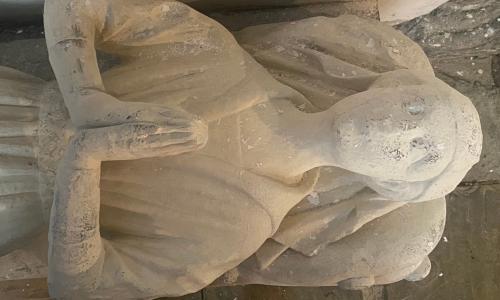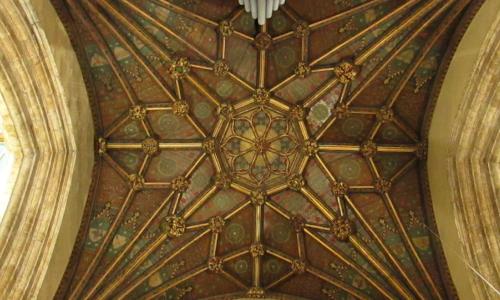John's Life and Achievements
John Alderson was born in Lowestoft, Norfolk, in 1757, the son of James and Judith. His father was a dissenting Minister of radical views. He came to Hull around 1778 as a medial officer with the West Norfolk Militia, along with his brother, James who was the Medical Officer for the Regiment. He studied medicine for a time in Edinburgh and “bought” a degree from Aberdeen University.
In 1781, John set up in medical practice in the Hull area. He married Sarah Scott and they had at least 10 children. They lived on Saville Street in Hull. By 1791 John was a Physician at Hull General Infirmary and had become a very respected man in the town, and soon built up a practice of wealthy patients. In 1782, the new General Infirmary was opened. He practised as a surgeon at Hull General Infirmary for free, training on the job to become a senior physician.
With a keen interest in literature and writing, he laid the foundation stone of the Hull Subscription Library. At the launch he said he said,
“Literature is indispensable to the happiness and prosperity of a commercial town.”
He became a widower in 1805 when his dear wife, Sarah, and three of their daughters all died within a short space of time.
In 1813, aged 56, John Alderson was made a Freeman of the Borough of Kingston upon Hull. Around this time, he carried out a number of commendable initiatives to improve the lives of Hull people, many of them based on medical improvements. He helped establish a Lying-in Charity for expectant mothers and, with a Doctor Ellis founded the Sculcoates Refuge for the Insane on Boteler Street in Hull.
The Lying in Charity for expectant and nursing mothers
In the late 1700's, the Infirmary did not have facilities for pregnant mothers to give birth. So, Alderson opened a suite for childbirth. Rules were strict, and hospital rules expressly forbade unmarried mothers. Childbirth was something of a lottery and many women and babies died during birth or shortly afterwards. Alderson’s “maternity suite” provided women with clean surroundings, fresh linen and support from midwives. Mothers were allowed to enter two weeks before the expected date of birth and could stay for a couple of weeks afterwards. This greatly improved survival rates.
The Hull Medical School
Alderson insisted on training all the staff at the HGI and taught junior colleagues there. He really wanted a separate school but died before this could be realised. In 1831 a school was opened in rooms on Charles Street, Hull. Two years later the Hull and East Riding School of Medicine and Anatomy in Kingston Square which was opened. Only the entrance remains and it is now a grade two listed structure, preserved as part of Kingston Court.
Social Reform
John had many other interests and always striving to improve the lot of the working classes physically, morally and spiritually as well as taking care of their medical needs. He was a contemporary of William Wilberforce and a supporter of Wilberforce’s campaign to abolish both the slave trade and slavery. Unfortunately he did not live to see the abolition of slavery in 1832 but he would have been highly pleased with the abolition of the slave trade within the British Empire in 1808.
Alderson's love of literature and science
Unfortunately it was to be many years before the poor of the town would be able to take advantage of library services but among his work was the establishment of education for working men in the form of a Mechanics Institute on Charles Street which opened in 1825. He was also President of the Hull Literary and Philosophical Society and the London Geological Institute. One of his many ideas was that Hull should have a university, part of which would include a medical school.
Alderson was a prolific writer on a variety of scientific topics: As well as medical texts such as An Essay on the Nature and Origin of the Contagion of Fever (1788) and An Essay on the Rhus Toxicodendron (1782), Alderson also produced a range of publications on topics such as geology and how to improve soil. He also wrote An Essay on Apparitions accounted for independently for Preternatural Agency which was stolen and published by someone else.
Death and obituary - from his plaque at the Mechanics Institute
In September 1829 John Alderson died. 15,000 watched his funeral cortege pass through the street of Hull.
His obituary reads
"Dr Alderson practised as a physician in Hull upwards of forty years, with ability, industry, and success never exceeded; was universally esteemed; an honour and ornament to his profession; and has left behind him a reputation of professional skill and moral worth. He was senior physician of the Hull General Infirmary for a long period. His career was marked by all the features which distinguish the advocate of virtues and the well being of the human race. Humane and benevolent without distinction of sect or party, he was active in promoting every object which promised general good, whether it assumed the shape of scientific and literary association or societies for the prevention and relief of distress. He laid the first stone of the Mechanics’ Institute and of the subscription library. He was president of the Literary and Philosophical Society, of which he was one of the founders and an indefatigable patron. He died 16th Sept 1829, aged 72 years, and was buried in the family vault at Sculcoates, to which place his remains were followed by a long train of friends and acquaintances, and an immense multitude of all ranks, to whom he had endeared himself by a life devoted to the service of his fellow creatures.” (As engraved on his statue presented by the Mechanics’ Institute)
His Hull Minster Monument
John Alderson's monument was erected at Holy Trinity Church by his children. It seems strange that it would be here as he was buried at Sculcoates. However, as a Freeman of the City and a founder of so many important organisations it was appropriate that the city commemorated him in its civic church. Holy Trinity was also the infirmary's church, hosting services for staff right up until the mid 1900's. Throughout the 1800's, nurses at the hospital were required to attend services on Sundays as part of their contract of employment.
Alderson's monument was restored in 2023 by Mattias Garn and Partner Studios of York. They replaced the right hand carving which had fallen off in the 2010's. They removed the backing marble, repaired the cramps which hold it to the wall and gave it a sympathetic clean - so that it still looks old not pristine. The repairs are also visible. These are called "honest repairs" - so that the repair becomes part of the story of the monument and we do no "fake" its appearance.
You can find out much more about the monument by clicking the link here. https://hullminsterheritage.org/catalogue/89




